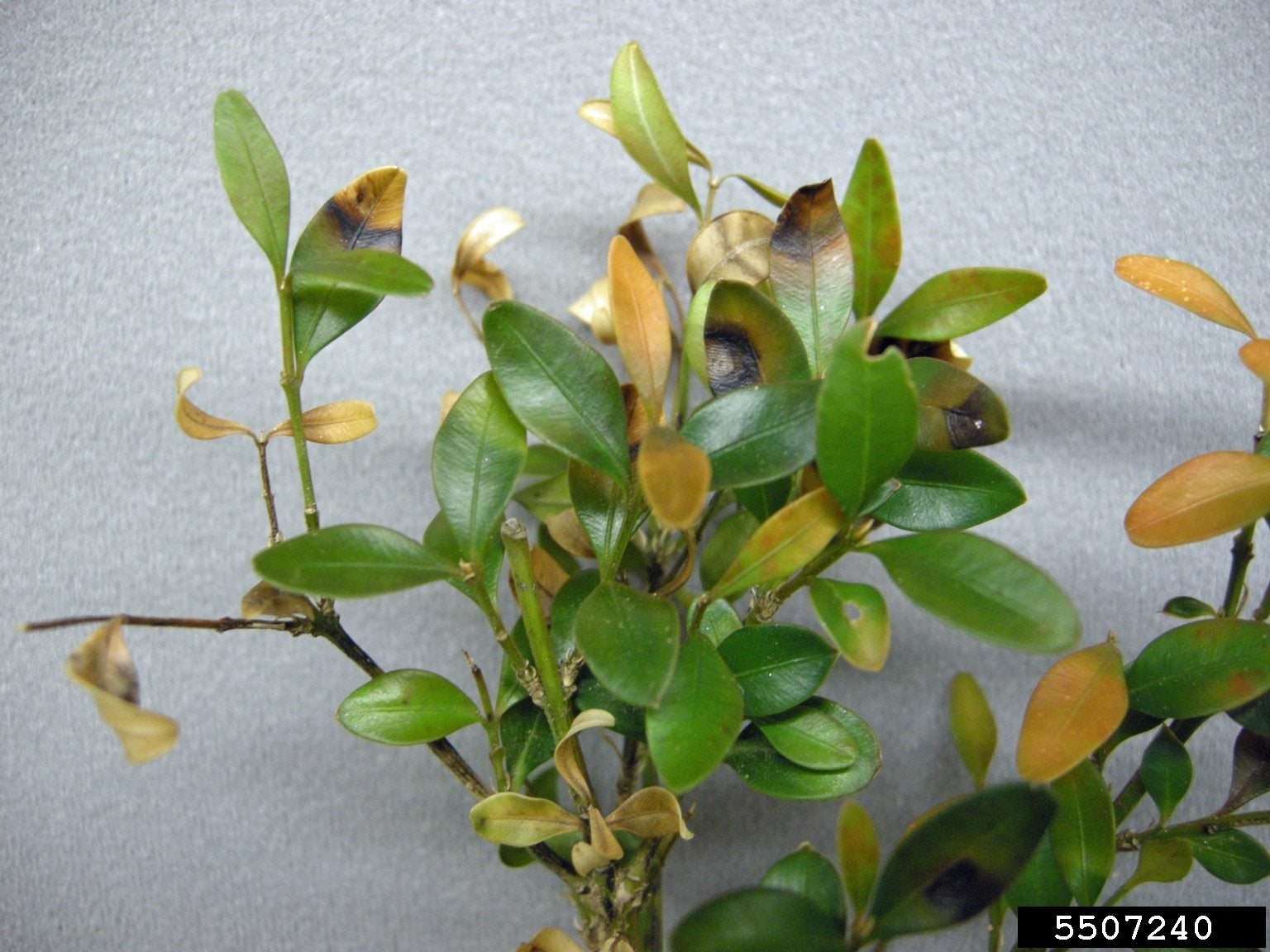What Is Boxwood Blight: Boxwood Blight Symptoms And Treatment


Boxwood blight is a relatively new plant disease that ruins the appearance of boxwoods and pachysandras. Find out about the prevention and treatment of boxwood blight in this article.
What is Boxwood Blight?
Boxwood blight is a fungal disease caused by the organism Cylindrocladium buxicola. The organism also goes by the pseudonyms Cylindrocladium pseudonaviculatum or Calonectria pseudonaviculata. The disease is called box blight in the U.K., and you may also hear it referred to as boxwood leaf drop in the U.S. Discovered in the U.K. in the mid 1990's, the disease didn’t make its way to the U.S. until October 2011, where it was detected in a nursery in North Carolina. It has since spread as far north as Massachusetts and can be found in isolated areas across the U.S. Boxwood blight symptoms are similar to the symptoms of other diseases that infect boxwoods. The first sign is round, brown spots on the leaves. The shrub then drops most, or all, of its leaves and the twigs begin to die back. The roots aren’t affected, so the shrub may regrow. Plants don't usually die of boxwood blight disease, but after repeatedly losing its leaves, it becomes so weak that it has no resistance to other diseases. Secondary infections usually attack and kill the plant.
How to Control Boxwood Blight
There is no cure for boxwood blight, so gardeners must rely on disease prevention to protect their plants. Take these precautions when working around boxwoods and pachysandra:
- Stay away from box and pachysandra plants when they are wet.
- Clean off the soles of your shoes before moving from one part of the garden to another.
- Disinfect your pruners between plants. Dip them in a solution of nine parts water and one part bleach for ten seconds and then allow them to air dry. Scrub them thoroughly with soap and water and dry them before putting them away.
- Destroy or dispose of boxwood clippings. Never compost them unless you are sure your plants are disease-free.
- Avoid planting boxwoods in partly shaded areas.
Horticulturalists are testing several methods of treatment, but the current recommendation is to remove and destroy the plant by burning it or bagging and disposing of it. Don’t replant boxwoods in the area where you removed diseased plants.
Sign up for the Gardening Know How newsletter today and receive a free copy of our e-book "How to Grow Delicious Tomatoes".

Jackie Carroll has written over 500 articles for Gardening Know How on a wide range of topics.